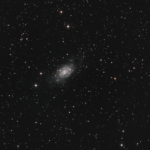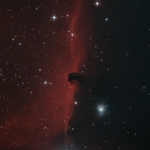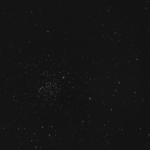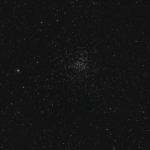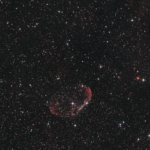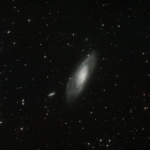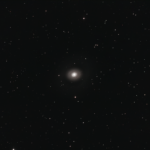NGC 2403 (also known as Caldwell 7) is an intermediate spiral galaxy in the constellation Camelopardalis. NGC 2403 is an outlying member of the M81 Group, and is approximately 8 million light-years distant. It bears a striking similarity to M33, being about 50,000 light years in diameter and containing numerous star-forming H II regions. The northern spiral arm connects it to the star forming region NGC 2404. NGC 2403…
Horsehead Nebula (Barnard 33)
The Horsehead Nebula (also known as Barnard 33) is a dark nebula in the constellation Orion. The nebula is located just to the south of the star Alnitak, which is farthest east on Orion’s Belt, and is part of the much larger Orion Molecular Cloud Complex. The nebula was first recorded in 1888 by Scottish astronomer Williamina Fleming on photographic plate B2312 taken at the Harvard CollegeObservatory. The Horsehead Nebula…
A Challenging Hobby
I like astrophotography because it is challenging. A good picture is only partly determined by the quality of optics and mount, the transparency and turbulence of the atmosphere and the darkness of the night sky. A large role is played by how the equipment is actually used: how collimated the optics, how good the polar…
Western Veil Nebula (NGC 6960)
The Veil Nebula is a cloud of heated and ionized gas and dust in the constellation Cygnus. It constitutes the visible portions of the Cygnus Loop (radio source W78, or Sharpless 103), a large but relatively faint supernova remnant. The source supernova exploded circa 3,000 BC to 6,000 BC, and the remnants have since expanded…
Messier 67
Messier 67 (also known as M67 or NGC 2682) is an open cluster in the constellation of Cancer. M67’s Trumpler class is variously given as II 2 r, II 2 m, or II 3 r. It was discovered by Johann Gottfried Koehler in 1779. Age estimates for the cluster range between 3.2 and 5 billion…
Messier 37
Messier 37 (also known as M37 or NGC 2099) is the richest open cluster in the constellation Auriga. It is the brightest of three open clusters in Auriga and was discovered by the Italian astronomer Giovanni Battista Hodierna before 1654. M37 was missed by French astronomer Guillaume Le Gentil when he rediscovered M36 and M38…
Fireworks Galaxy (NGC 6946)
NGC 6946 is a face-on intermediate spiral galaxy with a small bright nucleus, whose location in the sky straddles the boundary between the northern constellations of Cepheus and Cygnus. Its distance from Earth is about 22.5 million light-years or 6.8 megaparsecs, similar to the distance of M101 (NGC 5457) in the constellation Ursa Major. Both…
Crescent Nebula (NGC 6888)
The Crescent Nebula (also known as NGC 6888, Caldwell 27, Sharpless 105) is an emission nebula in the constellation Cygnus, about 5000 light-years away from Earth. It was discovered by Friedrich Wilhelm Herschel in 1792. It is formed by the fast stellar wind from the Wolf-Rayet star WR 136 (HD 192163) colliding with and energizing…
Messier 106
Messier 106 (also known as NGC 4258) is an intermediate spiral galaxy in the constellation Canes Venatici. It was discovered by Pierre Méchain in 1781. M106 is at a distance of about 22 to 25 million light-years away from Earth. M106 contains an active nucleus classified as a Type 2 Seyfert, and the presence of…
Messier 94
Messier 94 (also known as NGC 4736) is a spiral galaxy in the constellation Canes Venatici. It was discovered by Pierre Méchain in 1781, and catalogued by Charles Messier two days later. Although some references describe M94 as a barred spiral galaxy, the “bar” structure appears to be more oval-shaped. The galaxy has two ring structures….
